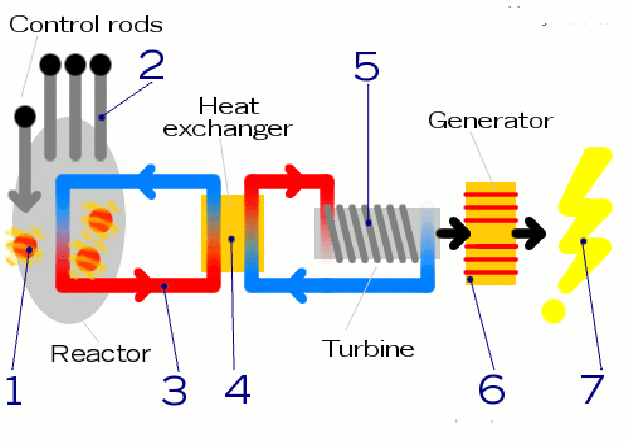Uranium fuel is loaded up into the reactor—a giant concrete dome that's reinforced in case it explodes. In the heart of the reactor (the core), atoms split and release heat energy, producing neutrons and splitting other atoms in a chain reaction.
-
Control rods made of materials such as cadmium and boron areraised or lowered into the reactor to soak up neutrons and slow downor speed up the chain reaction as needed.
-
Water is pumped through the reactor to collect the heatenergy that the chain reaction produces. It constantly flows arounda closed loop linking the reactor with a heat exchanger.
-
Inside the heat exchanger, the water from the reactor givesup its energy to cooler water flowing in another closed loop,turning it into steam. Using two unconnected loops of water and theheat exchanger helps to keep water contaminated with radioactivitysafely contained in one place and well away from most of theequipment in the plant.
-
The steam from the heat exchanger is piped to a turbine.As the steam blows past the turbine's vanes, they spin around athigh speed.
-
The spinning turbine is connected to an electricitygenerator and makes that spin too.
-
The generator produces electricity that flows out to thepower grid—and to our homes, shops, offices, and factories.

Gas and coal fired power stations work in the same way – coal or gas is burnt to produce heat instead of uranium.
